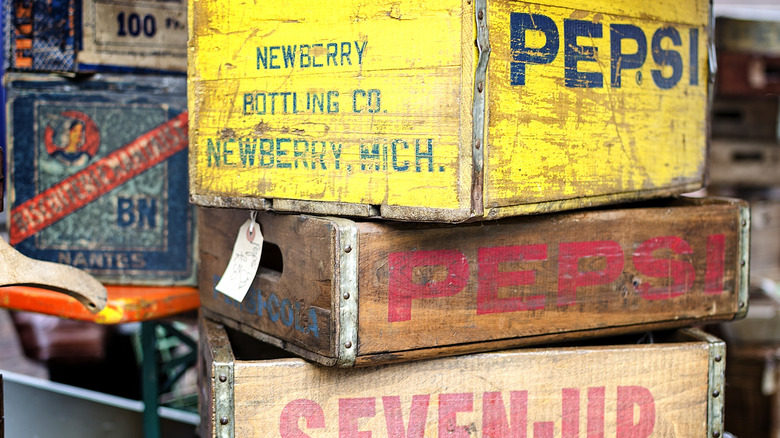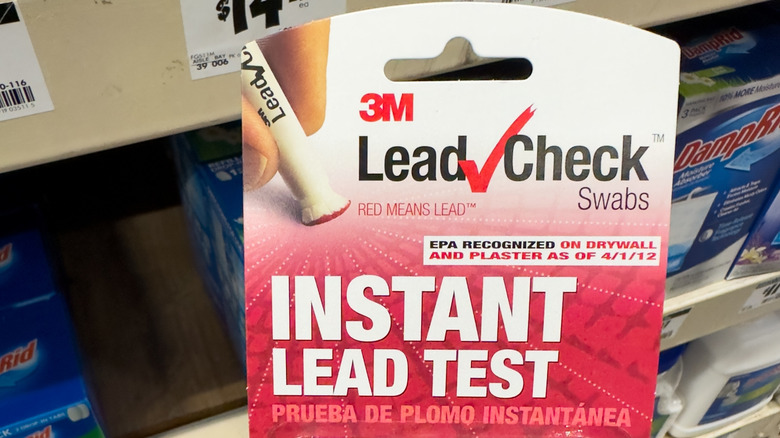Transform Rustic Soda Crates Into Useful Kitchen Decor That Your Inner Chef Will Appreciate
We may receive a commission on purchases made from links.
Traditional spice racks can quickly feel disorganized, turning a simple recipe into a treasure hunt for the right seasoning. If you have no designated spot for your spices, this pursuit can become drastically more difficult, as the jars seem to cram up your cabinet space. You might think that the answer lies in a more modern storage system, but it's actually a blast from the past that's helping homeowners properly organize spices so they can see all of their labels. A simple vintage soda crate might not seem like much in terms of revolutionizing the way you use your kitchen, but it packs a surprising organizational punch. Each of the crate's compartments is typically about the size of a spice jar, allowing you to fit your seasonings into one compact storage area.
Finding the right crate for your kitchen is all part of the organizational journey. Some crates are larger than others, with deeper compartments that can fit larger kitchen items like honey or sugar jars. They may not have the traditional boxes that are associated with soda crates but instead might feature a simple divider between both sides. This can make for an excellent shelving system, providing additional surface area for storing mugs, plates, or coffee essentials. Similarly, smaller crates may be perfect for storing odds and ends that you might find scattered around your kitchen. Searching flea markets, antique stores, and estate sales should provide you with a number of options to choose from that will allow you to customize your spice storage in a way that works for you.
Testing for lead paint
However, there are a few things you should know before bringing vintage items into your home, including how to check for lead paint. Many vintage items were painted with lead-based paints, which were extremely common before regulations banned the toxic metal from household usage in 1978. Exposure to lead paint can cause serious health risks, so it is essential that you test any pieces before introducing them into environments with children, food, or pets. If you're worried about potential exposure to lead, there are some tell-tale signs. For starters, lead paint tends to peel in a flakey manner, similar to alligator skin. Furthermore, as it ages, it tends to turn a blueish, gray hue.
However, if you still aren't 100% sure about the contents of the paint on your antique crate, home testing kits are designed to detect the presence of lead in most painted surfaces, from wall panelling to children's toys. They are available for purchase at most hardware stores, allowing you to swab areas that may be exposing your home to lead. With these tests, if you see red, it's lead. However, these kits have a bad reputation for being ineffective, as they only test the surface level of paint and not the layers underneath. For the most accurate testing, you should get a paint chip tested by a National Lead Laboratory Accreditation Program lab.
Using a soda crate around your kitchen
Once your vintage soda crate has passed the lead inspection, it's time to set it up in your kitchen. This can be done one of two ways: either wall-mounted or freestanding on your counter. If you choose to wall-mount your crate, pick an area that is easily accessible as you cook, allowing you to keep necessary seasonings on hand at all times. With a countertop display, position it in an area that minimizes the amount of kitchen clutter. It works exceptionally well directly next to a stove to reach spices with ease. As a spice rack, soda crates pair exceptionally well with the Churboro 25 Glass Jars with Labels. The stickers allow you to label each jar on the lid so that your jars can stay tucked away inside your crate. With this trick, you certainly won't want to hide your spice rack but instead use it as a stunning display of essential spices around your kitchen.
If you aren't sold on creating a rustic spice rack using a vintage soda crate, there are still plenty of ways to incorporate it into your kitchen organization. For starters, a soda crate can be a welcomed addition to any coffee bar, especially one with a Keurig. If your K-cups seem to have a mind of their own, store them in a vintage soda crate with the labels facing out. Additionally, with a bit of medium-density fiberboard, add small square storage bins to the soda crate to make customized storage spaces for kitchen clutter.

